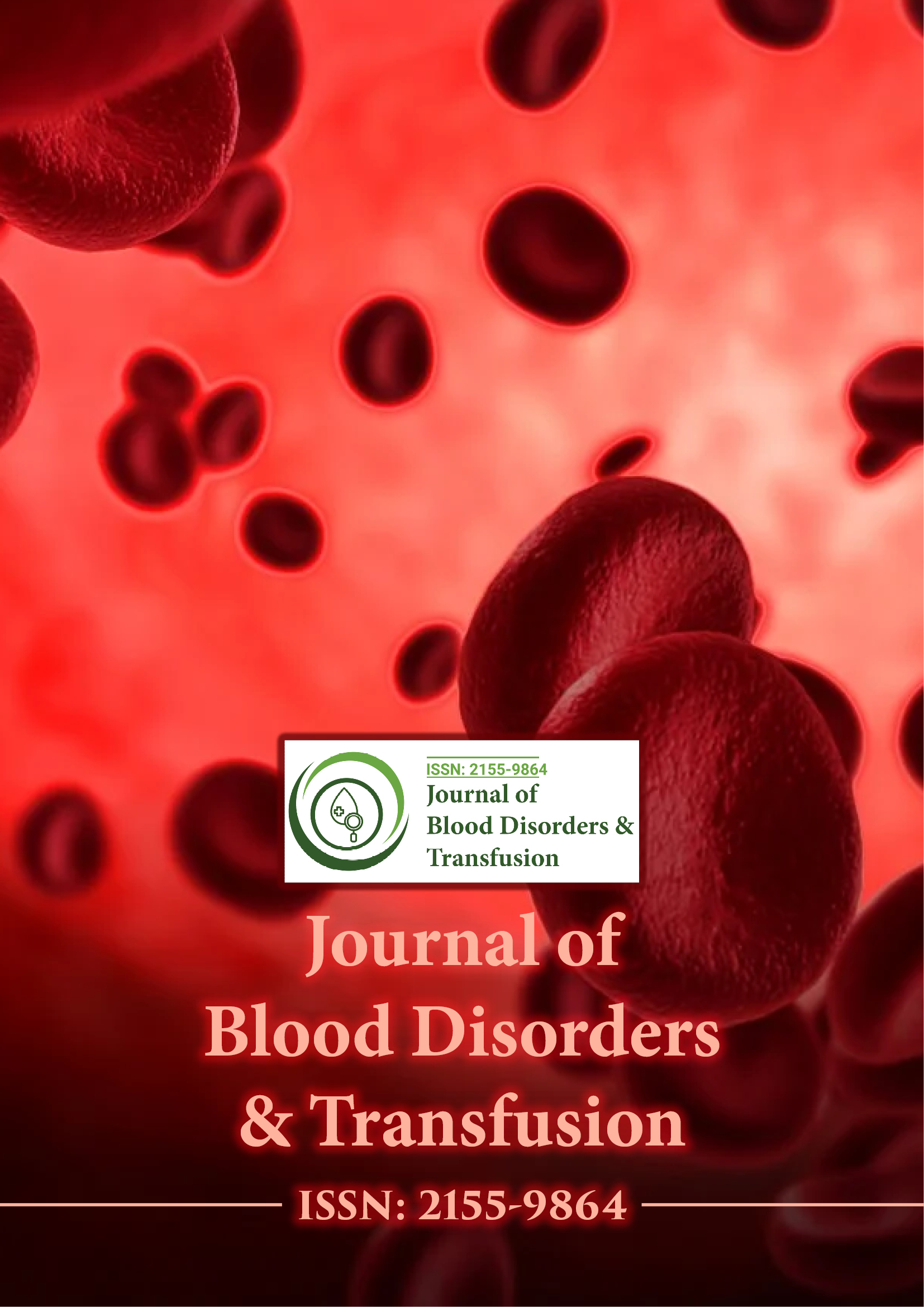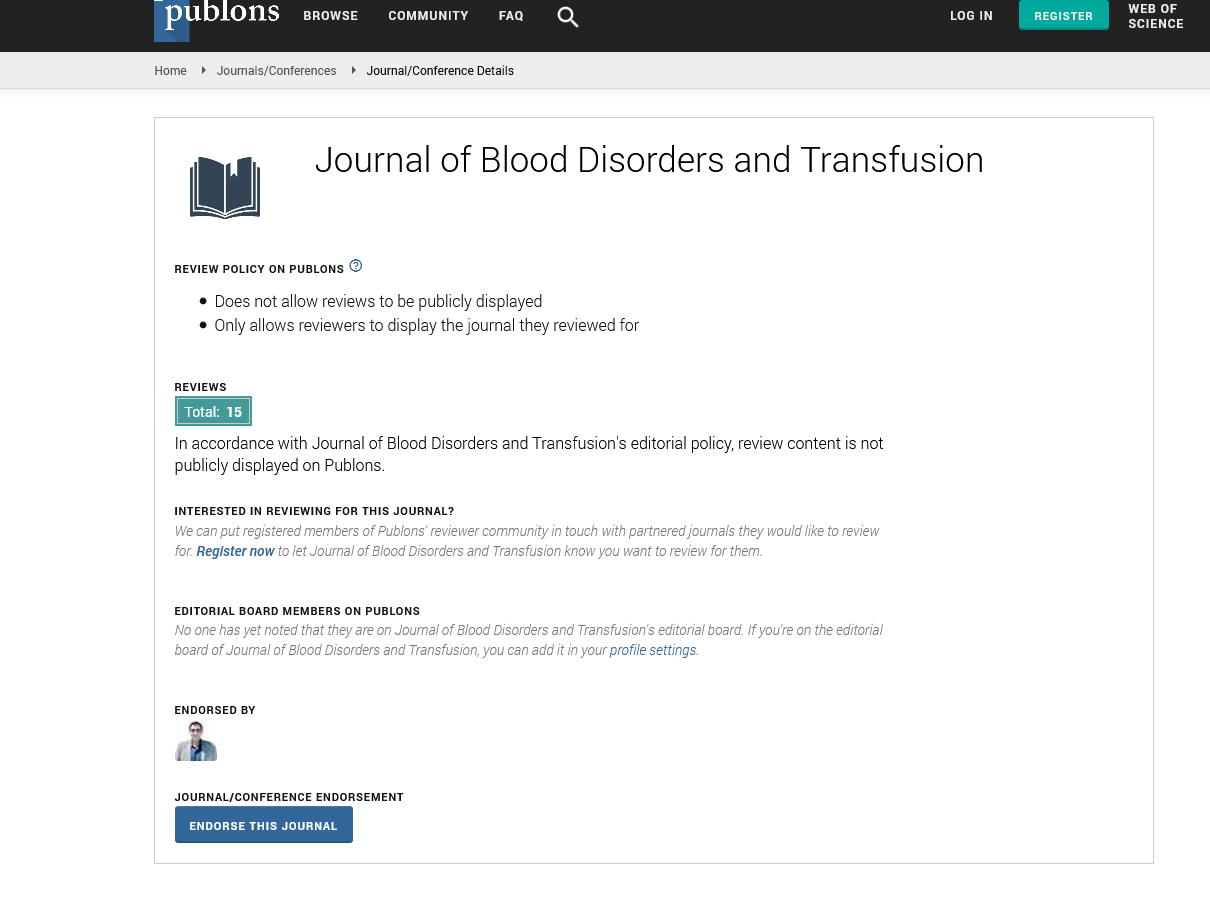Indexed In
- Open J Gate
- Genamics JournalSeek
- JournalTOCs
- Ulrich's Periodicals Directory
- RefSeek
- Hamdard University
- EBSCO A-Z
- OCLC- WorldCat
- Proquest Summons
- Publons
- Geneva Foundation for Medical Education and Research
- Euro Pub
- Google Scholar
Useful Links
Share This Page
Journal Flyer

Open Access Journals
- Agri and Aquaculture
- Biochemistry
- Bioinformatics & Systems Biology
- Business & Management
- Chemistry
- Clinical Sciences
- Engineering
- Food & Nutrition
- General Science
- Genetics & Molecular Biology
- Immunology & Microbiology
- Medical Sciences
- Neuroscience & Psychology
- Nursing & Health Care
- Pharmaceutical Sciences
Abstract
Cryodepleted Plasma Exchange Improves Survival in Thrombotic Thrombocytopenic Purpura: A Systematic Review and Meta-Analysis
Andrea O. Sugay, Daniel Kerage and Denise E. Jackson*
Objectives: Thrombotic Thrombocytopenic Purpura (TTP) is a rare disease Associated with a Deficiency in a Disintegrin-like Metalloproteinase with Thrombospondin Motif Type 1 Member 13 (ADAMTS13) leading to Unregulated Ultra-Large von Willebrand Factor (ULVWF), which forms platelet-rich thrombi in the microvasculature. The first-line treatment for TTP is Therapeutic Plasma Exchange (TPE) with Fresh Frozen Plasma (FFP) or Cryodepleted Plasma (CDP). CDP has been hypothesised to perform better because it contains minimal levels of ULVWF. This study aimed to explore whether CDP, rather than FFP, improves outcomes in patients with TTP.
Methods: A systematic review and meta-analysis were performed according to the Preferred Reporting Item for Systematic Review and Meta-Analysis (PRISMA) guidelines. A comprehensive search and screening of the PubMed, Scopus, Ovid and Embase databases resulted in seven eligible articles.
Results: The current study revealed an increased odds of survival (Odds Ratio (OR)=3.44; 95% Confidence Interval (CI) 1.55-7.66; p=0.002) and a decreased odds of mortality (OR=0.29; 95% CI 0.13-0.65; p=0.002) for patients treated with CDP compared to FFP. Analysis of the differences in the number of TPE sessions and volume of TPE fluid required, as well as the rates of response and relapse did not reach statistical significance.
Conclusion: This study reveals favourable odds of survival for TTP patients treated with TPE using CDP over FFP. There is insufficient evidence to support CDP’s superior performance over FFP in other regards. Acceptance of this conclusion is limited by confounding variables and the risks of bias associated with the reviewed studies.
Published Date: 2024-12-13; Received Date: 2024-11-13

